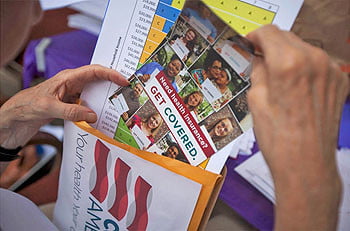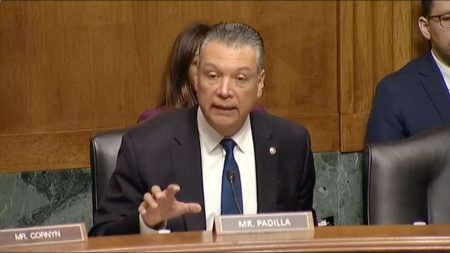It’s Time to Sign Up for Healthcare

November and December are the months for Americans to sign up for or renew coverage under the Affordable Care Act – fondly known as “Obamacare” – or other government programs.
Medicare patients don’t need to do anything about basic Medicare Part A and Part B; once enrolled you stay enrolled. But for those who have private insurance plans under Medicare Advantage (supplemental care) or Medicare Part D (prescription drug coverage), if you want to change providers, you have to renew or change by December 7. Visit www.Medicare.GOV (not medicare.com or other commercial sites), or call 1-800-MEDICARE.
Those who aren’t eligible for Medicare or for Medicaid (insurance for those in need) need to sign up for coverage under the Affordable Care Act (“Obamacare”) before Dec. 31. Visit www.healthcare.gov to learn what coverage is available and what subsidies you’re eligible for.
After you log in (with a new or existing account) you’ll choose between “Employer” and “Employee” or “Individual” plans, because the options are different for people in those categories. If you have a job with a company that is exempt from having to offer health insurance, your options are different than if you’re self-employed or don’t work for a single company.
Then you’ll answer questions about your family (single, married, children, other dependents, etc.); your vital statistics (sex, age, whether or not you smoke); and your expected income from all sources in 2016 (part-time or full-time jobs, self-employment, rent, dividends, etc.). Your subsidy (what the government will pay) is based on these factors.
You then decide how much of that subsidy to apply to your insurance coverage (before you choose a plan). The reason is that if you earn more than you expected, you’ll have to pay back some of the subsidy; if you earn less, you might (or might not) get a larger refund. The subsidy could change if you get married, have a child, or take in a dependent parent; move and pay higher or lower rent or mortgage, or for other reasons. Be conservative, and as accurate as possible, in your anticipated income estimates.
You can also go back and change your estimates: for example, if your anticipated income is $18,000 per year [$1,200/month] and that offers you a subsidy of $600 toward whatever plan you choose, you can change the details of your income to make it $20,000 or $16,000 or whatever number is more likely—then your subsidy might change to $500 or $750. Everyone’s circumstances are different; subsidies range from very little to a lot.
When comparing plans on HealthCare.gov look for the initials: PPO (Preferred Provider Organizations), which gives you a choice of getting care from in-network or out-of-network providers; POS (Point of Service), you choose a primary doctor, and that doctor will refer you to other doctors, and you may pay higher out-of-pocket cost; or EPO (Exclusive Provider Organizations), which generally limit coverage to care from providers in the EPO network (except in an emergency).
With an HMO, (Health Maintenance Organizations), you will have to be “pre-approved” by your primary care physician before you can see any, or the same physicians/specialists you’ve been going to for years – so be careful in your selection of plans. HMOs could limit coverage to care from providers who work for or contract with HMOs.
If you have been going to your health care provider for a long time, or if you have been seeing a specialist (and a LOT of doctors are taking on the title of “specialist”), you are better off with a PPO than an HMO. If you travel a lot, check to see if the health plan’s network has providers where you travel and might need medical care.
Review the available medical plans carefully, and make sure the plan you choose fits your health needs. In North Carolina these plans are limited to three insurers: Blue Cross/Blue Shield of NC, United Health Care, and Aetna/Coventry. If you need assistance, you can also call the Marketplace Call Center at: 1-800-318-2596.
Speaking in Washington November 7, President Obama encouraged those who do not have health insurance to take advantage of the open enrollment period and sign up for coverage.
“For decades,” said the president, “too many working Americans went without the security of health insurance – and their financial well-being suffered because of it. As the Affordable Care Act has taken effect, we’ve covered 17.6 million Americans; since 2010, the uninsured rate has decreased by 45%.”
In fact, a third of those without health insurance five years ago—45 million Americans—are now covered; 90% of all Americans now have insurance.
For those who still lack coverage, Obama said, “with a few clicks on HealthCare.gov, you’ll find private insurance companies competing for your business. Most Americans will find an option that costs less than $75 a month.”
They will also find peace of mind, he noted.
“Under the Act, if you want to change jobs, go back to school, or chase that new idea, you can do it without worrying about going broke if you get sick. If you’ve got a pre-existing condition – diabetes or cancer or heartburn or a heart attack – you can no longer be charged more or denied coverage. You can no longer be charged more just for being a woman. And preventive care like checkups and immunizations now come with no additional out-of-pocket costs.”
Again, check out HealthCare.gov, CuidadoDeSalud.gov, or call 1-800-318-2596 to find a plan that’s right for you or someone you care about. As the president said, “This country is at its best when we look out for each other.” You may also contact Pisgah Legal Services who have certified Healthcare Navigators to assist you.





